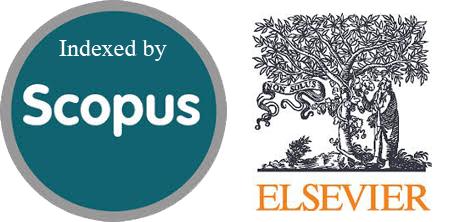The Burden Encountered by Caregivers of Hemophilia Patients and the Associated Factors in Iraq: A Field Study
DOI:
https://doi.org/10.54133/ajms.v9i1.2099Keywords:
Caregiver Burden, Caregiver productivity loss, Hemophilia, Socioeconomic impact, Zarit burden interviewAbstract
Background: Hemophilia demands long-term care, profoundly affecting both patients and their families. Objective: To evaluate the burden and productivity loss encountered by caregivers of hemophilia patients and associated factors in Iraq. Methods: This cross-sectional study was conducted among caregivers of hemophilia A and B patients at the Children Welfare Teaching Hospital, Medical City, Baghdad, Iraq. Caregiver burden was measured using the Arabic version of the Zarit Burden Interview (ZBI-12) via face-to-face survey. Caregivers' productivity loss was assessed by determining annual income loss and missed workdays. Data were collected from November 2024 to February 2025. Results: The study recruited 109 caregivers. The mean caregiver burden score of 29.56 reflects a high level of strain, particularly in emotional distress, stress, health impact, and loss of personal time. Families with more than one hemophiliac had significantly higher burden scores (33.79) compared to families with one patient. Mothers had the highest burden scores compared to fathers and other caregivers, but no significant difference was found among these groups. Caregivers reported an average of 16.2 missed workdays annually due to caregiving responsibilities. Conclusions: The Zarit Burden Interview revealed a high caregiver burden, especially due to emotional strain, the stress of balancing responsibilities, and health challenges. Families with multiple children with hemophilia experience an even greater burden. The study recommends providing financial aid, counseling, and mental health services to help caregivers manage emotional strain and stress.
Downloads
References
Kulkarni R, Soucie JM. Pediatric hemophilia: a review. Semin Thromb Hemost. 2011;37(7):737-744. doi: 10.1055/s-0031-1297164. DOI: https://doi.org/10.1055/s-0031-1297164
Annual Global Survey 2022. World Federation of Hemophilia. Accessed January 23, 2024. Available at: https://wfh.org/research-and-data-collection/annual-global-survey/
Manco-Johnson MJ, Abshire TC, Shapiro AD, Riske B, Hacker MR, Kilcoyne R, et al. Prophylaxis versus episodic treatment to prevent joint disease in boys with severe hemophilia. N Engl J Med. 2007;357(6):535-544. doi: 10.1056/NEJMoa067659. DOI: https://doi.org/10.1056/NEJMoa067659
Gringeri A, Lundin B, Von Mackensen S, Mantovani L, Mannucci PM. A randomized clinical trial of prophylaxis in children with hemophilia A (the ESPRIT Study). J Thromb Haemostasis. 2011;9(4):700-710. doi: 10.1111/j.1538-7836.2011.04214.x. DOI: https://doi.org/10.1111/j.1538-7836.2011.04214.x
National Hemophilia Foundation. MASAC recommendation concerning prophylaxis (regular administration of clotting factor concentrate to prevent bleeding). MASAC Document #179. February 28, 2016. Available at: http://www.hemophilia.org/NHFWeb/Resource/StaticPages/menu0/menu5/menu57/masac179.pdf. Accessed May 23, 2018.
Colvin BT, Astermark J, Fischer K, Gringeri A, Lassila R, Schramm W, et al. European principles of haemophilia care. Haemophilia. 2008;14(2):361-374. doi: 10.1111/j.1365-2516.2007.01625.x. DOI: https://doi.org/10.1111/j.1365-2516.2007.01625.x
DeKoven M, Karkare S, Kelley LA, Cooper DL, Pham H, Powers J, et al. Understanding the experience of caring for children with haemophilia: Cross‐sectional study of caregivers in the United States. Haemophilia. 2014;20(4):541-549. doi: 10.1111/hae.12379. DOI: https://doi.org/10.1111/hae.12379
Pilapil M, Coletti DJ, Rabey C, DeLaet D. Caring for the caregiver: supporting families of youth with special health care needs. Curr Problem Pediatr Adolescent Health Care. 2017;47(8):190-199. doi: 10.1016/j.cppeds.2017.07.003 DOI: https://doi.org/10.1016/j.cppeds.2017.07.003
Myrin Westesson L, Sparud‐Lundin C, Baghaei F, Khair K, von Mackensen S, Acuña Mora M, et al. Burden on parents of children with haemophilia: the impact of sociodemographic and child's medical condition. J Clin Nurs. 2019;28(21-22):4077-4086. doi: 10.1111/jocn.15003. DOI: https://doi.org/10.1111/jocn.15003
Klassen AF, Gulati S, Granek L, Rosenberg-Yunger ZR, Watt L, Sung L, et al. Understanding the health impact of caregiving: a qualitative study of immigrant parents and single parents of children with cancer. Quality Life Res. 2012;21:1595-1605. doi: 10.1007/s11136-011-0072-8. DOI: https://doi.org/10.1007/s11136-011-0072-8
Poley MJ, Brouwer WB, van Exel NJ, Tibboel D. Assessing health-related quality-of-life changes in informal caregivers: an evaluation in parents of children with major congenital anomalies. Quality Life Res. 2012;21:849-861. doi: 10.1007/s11136-011-9991-7. DOI: https://doi.org/10.1007/s11136-011-9991-7
Sales E. Family burden and quality of life. Quality Life Res. 2003;12:33-41. doi: 10.1023/A:1023513218433 DOI: https://doi.org/10.1023/A:1023513218433
Stein RE, Riessman CK. The development of an impact-on-family scale: preliminary findings. Med Care. 1980;18(4):465-472. DOI: https://doi.org/10.1097/00005650-198004000-00010
Bachner YG. Preliminary assessment of the psychometric properties of the abridged Arabic version of the Zarit Burden Interview among caregivers of cancer patients. Eur J Oncol Nurs. 2013;17(5):657-660. doi: 10.1016/j.ejon.2013.06.005. DOI: https://doi.org/10.1016/j.ejon.2013.06.005
Zarit SH, Reever KE, Bach-Peterson J. Relatives of the impaired elderly: correlates of feelings of burden. Gerontologist. 1980;20(6):649-655. doi: 10.1093/geront/20.6.649. DOI: https://doi.org/10.1093/geront/20.6.649
Shakya M, Banstola RS, Shrestha R. Psychosocial burden of parents having children with haemophilia in Nepal. J Chitwan Medi Coll. 2024;14(1):67-71. doi: 10.54530/jcmc.1444. DOI: https://doi.org/10.54530/jcmc.1444
von Mackensen S, Myrin Westesson L, Kavakli K, Klukowska A, Escuriola C, Uitslager N, et al. The impact of psychosocial determinants on caregivers’ burden of children with haemophilia. Haemophilia. 2019;25(3):424-432. doi: 10.1111/hae.13684. DOI: https://doi.org/10.1111/hae.13684
Al-Beldawi DH. The risk factors of inhibitor development and hepatitis C virus among hemophilic patients in Children Welfare Teaching hospital. J Fac Med Baghdad. 2010;52(1):4-8. doi: 10.32007/jfacmedbagdad.5211036. DOI: https://doi.org/10.32007/jfacmedbagdad.5211036
Torres‐Ortuño A, Cuesta‐Barriuso R, Nieto‐Munuera J. Parents of children with haemophilia at an early age: assessment of perceived stress and family functioning. Haemophilia. 2014;20(6):756-762. doi: 10.1111/hae.12471. DOI: https://doi.org/10.1111/hae.12471
Ersoy GZ, Ertekin M, Dikme G. Hemophilia caregiver burden in a low socioeconomic region of Turkey. Turkish Arch Pediatr. 2023;58(6):618. doi: 10.5152/TurkArchPediatr.2023.23129. DOI: https://doi.org/10.5152/TurkArchPediatr.2023.23129
Al-Jumaili AA, Younus MM, Kannan YJ, Nooruldeen ZE, Al-Nuseirat A. Pharmaceutical regulations in Iraq: from medicine approval to post-marketing. East Mediterranean Health J. 2021;27(10). doi: 10.26719/emhj.21.025. DOI: https://doi.org/10.26719/emhj.21.025

Downloads
Published
How to Cite
Issue
Section
License
Copyright (c) 2025 Al-Rafidain Journal of Medical Sciences ( ISSN 2789-3219 )

This work is licensed under a Creative Commons Attribution-NonCommercial-ShareAlike 4.0 International License.
Published by Al-Rafidain University College. This is an open access journal issued under the CC BY-NC-SA 4.0 license (https://creativecommons.org/licenses/by-nc-sa/4.0/).











